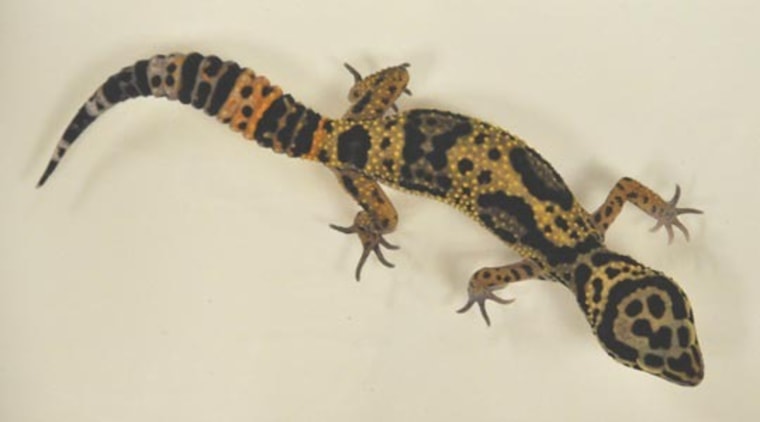A gecko's tail continues to flip, flop and wriggle long after it has dropped off the lizard's body.
Now a new study proposes the tail is preprogrammed for random movement to foil predators while the rest of the gecko makes a speedy getaway.
Since the secret appears to be neurons that can generate movement without direct instructions from the brain, future research could benefit humans and other animals that have sustained spinal cord injuries.
In the gecko's case, its tail is actually an extension of its spinal cord. No other animal, however, appears to be able to self-amputate a body part that can later move. It would be like a person dropping off one leg that continues to hop around while the rest of the person escapes.
"Other animals can lose appendages, such as spiders, sea stars and lobsters, but the purpose isn't to distract a predator like the lizard tail," lead author Timothy Higham told Discovery News, explaining that these other animals just have the still-remarkable ability to regenerate the lost body part.
Higham, an assistant professor in the Department of Biological Sciences at Clemson University, and co-author Anthony Russell studied the moving tail phenomenon on four leopard geckos.
They first anesthetized the reptiles in order to implant electrodes on various parts of the geckos' bodies. Once recovered, the geckos had their tails lightly pinched by the scientists, causing each lizard to release its tail through a series of muscle contractions.
"These muscular contractions cause the vertebra to break in half, and the tail falls off," Higham explained.
He and Russell next placed the tails in a filming arena. Using a high-speed video camera, they determined each tail continued to wriggle, as well as to lunge by pushing with its tip. The tails could flip up to 1.2 inches in height by themselves. The complex movements lasted for up to 30 minutes.
The findings are published in the latest Royal Society Biology Letters.
Previously it was thought the phantom tail movements relied on sensory feedback from the environment. Higham and his colleagues could find no evidence for that.
Instead, it appears that multiple rhythm generators produced by the gecko's spinal cord interact and continue to do so even after the tail leaves the animal's body.
Like an MP3 player set to random play, the tail then moves in a random manner that can look realistic to a puzzled, observing predator. The gecko benefits because the predator often goes after the tail while the now lighter lizard runs away.
Although the gecko can grow its tail back in six to eight weeks, the process is costly since "many geckos store a large amount of fat in the tail," Higham said. Often the gecko will try to return to the self-amputation site to consume its lost appendage, in order to regain some of the lost nutrients.
Even so, its regrown tail often looks different and may not exhibit such effective automated movement if it, too, must be later released from the animal's body.
Nevertheless, the scientists are hopeful that "understanding the modulation of spinal cord circuitry used in rhythmic behaviors will enhance the development of new treatments to assist recovery after spinal cord damage," Higham said.
Gary Gillis, an assistant professor in the Department of Biological Sciences at Mount Holyoke College, told Discovery News that other studies on this subject have mostly focused on the gecko's response to losing its tail, but this "new paper instead focuses on what the tail does after losing its lizard."
Gillis was "particularly intrigued" with the idea of the phantom moving tail "as a model preparation for studies of central pattern generation."
He added: "It's looking like studying lost lizard tails might end up telling us about a lot more than just the lizards that lost them."
